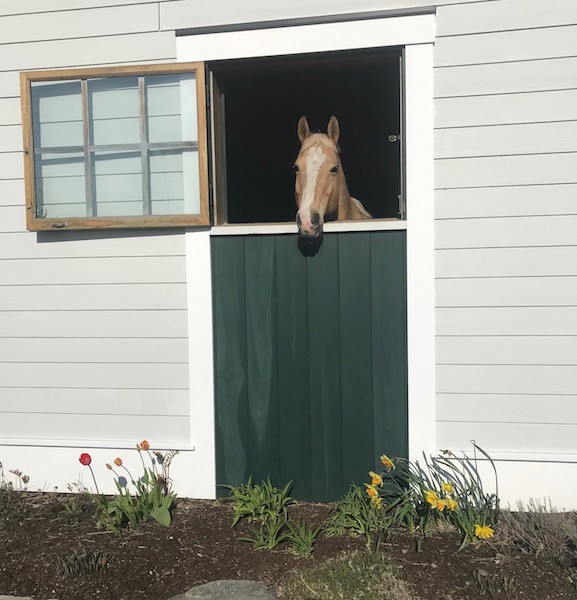
Although we won’t be leaving the farm anytime soon, we can still dream of future field trips! With a little extra time to practice our communication and groundwork, we are taking the opportunity to get all of our horses comfortably self-loading and unloading from the trailer.
Trailer loading is often associated with stress (we’re going to a show!) or time pressure (we’re going to be late!) or worry (what if my horse won’t load?) so the first step is to practice this essential skill in a completely relaxed environment. When we ask a horse to follow us onto a trailer, we treat it like any other obstacle. We want to break it down into pieces so that our horses feel comfortable with each step, and one of the most overlooked parts of loading is the importance of unloading. Many horses are nervous about backing off as they can’t see where they’re going. For this reason, we always ask a horse to stop once they’ve stepped onto the ramp and then quietly back off again.
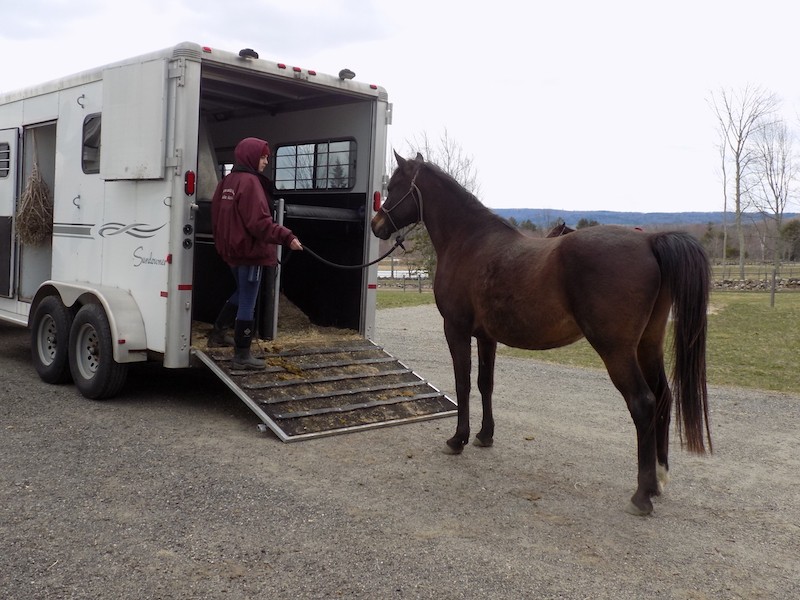
Once they’ve backed off a few times and are comfortable with the movement, we might ask them to step all the way on. The idea is to make the trailer a relaxing, ‘no pressure’ place to be. Although opinions differ on giving treats, we have no problem in offering the horse a treat or some hay to help reinforce the idea of the trailer as a positive place. If the horse backs off right away in fear, we will just quietly repeat the exercise. Applying more pressure when a horse is afraid will not help. However, if the horse is comfortable and relaxed with the trailer but wants to back off before we’re ready, we could then apply a little pressure from behind to make getting off less convenient.
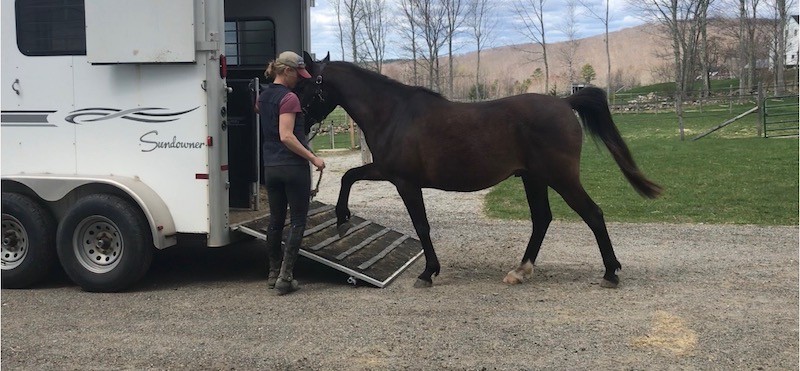
A key component to successful trailer loading is teaching the horse to be straight. If they are thinking left or right, their feet will follow. If they are turned sideways, they won’t be able to comfortably load and unload. Once the horse is standing straight and lined up to enter the trailer, we release all pressure: this helps them understand how to position themselves. If they wiggle side to side or try to leave the area, we can move their feet as in any groundwork exercise until they are lined up and thinking straight again, and then release and let them relax. The idea we keep in mind is that straight, forward, and anything inside the trailer is a relaxed, no pressure place. Conversely, if our horse is thinking sideways, backwards or is trying to leave the scene, that will be more work for them to do.
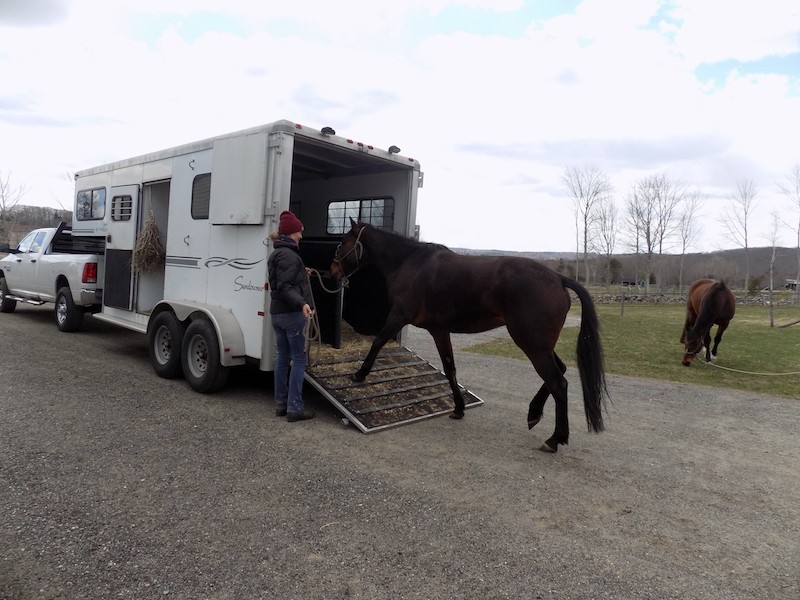
Teaching a horse to self-load and unload is the next step, and should only be attempted once a horse is very comfortable loading. This is a great skill to have in our toolbox, as there will be times when we won’t have people around to help us out. Once again, the most important aspect here is making sure a horse knows how to safely unload. Without someone at their head to guide them backwards, horses will occasionally attempt to turn around in the trailer. This is extremely dangerous, and for this reason we always have someone waiting in the front of the trailer to guide the horse when we introduce self-loading.
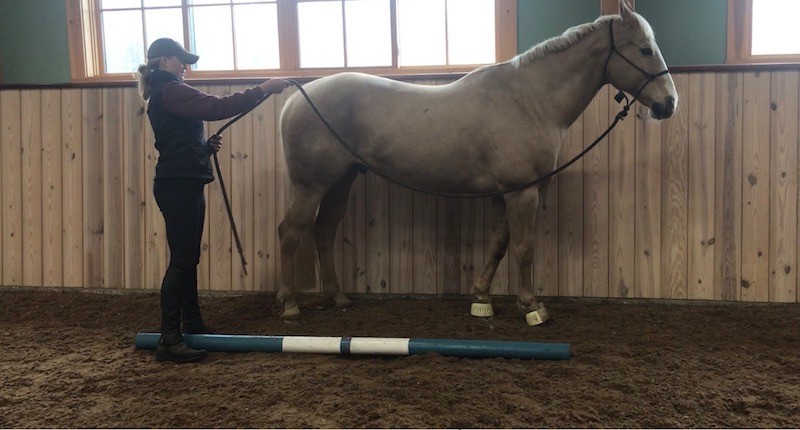
Self-loading requires all of the same skills we have just been practicing, but at a higher level. The horse needs to be comfortable with all steps of the process and be thinking straight, and then they can walk right into the trailer at the suggestion of the handler. We always start with a second person standing in front by the hay net. This person can gently keep the horse straight, and then guide him backwards to unload so that they don’t try to turn around. An exercise we recommend practicing prior to self loading involves asking the horse to back straight, with the handler behind and off to the side as they would be at the trailer. To do this, we used the arena wall and a pole, and practiced having the horse stop straight in the makeshift chute then back straight between the wall and pole, using a vocal cue and gentle bump of the lead on their shoulder. We wanted to make very sure they understood how to back straight without someone at their head.
With practice, trailer loading and unloading can become as simple as any other exercise. Take the time to make sure the horse understands each step, focus on straightness, and find as many moments as possible to release and reward for even a tiny step in the right direction.




